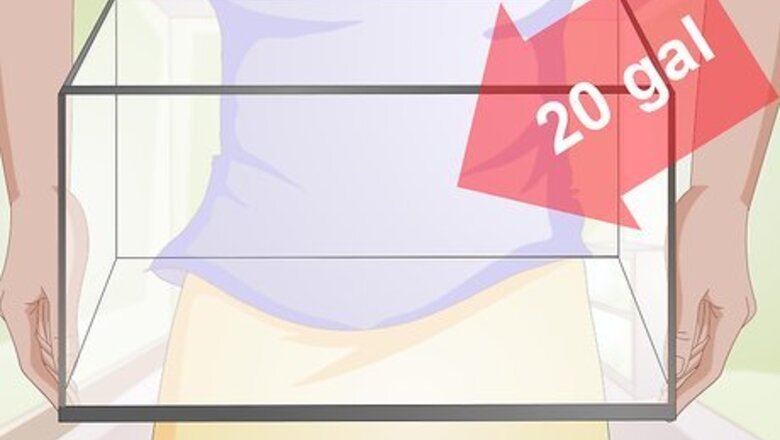
views
Equipping a Nursery Tank
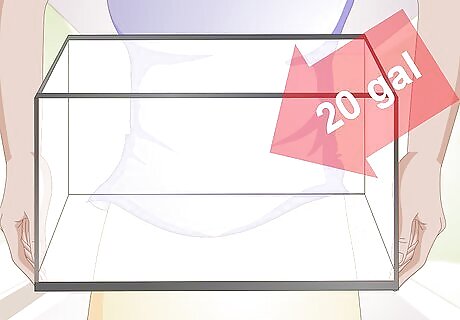
Find a large enough tank. Look for a tank between five and 20 gallons to raise your fry. If you intend to keep the mother molly in with the fry, have multiple broods going into the same tank, or if you have a large brood, opt for a larger tank. Generally, for broods without their mother, a 10 gallon tank will be sufficient. If your fry are going to be live born, make sure you have the nursery tank ready before the mother gives birth.
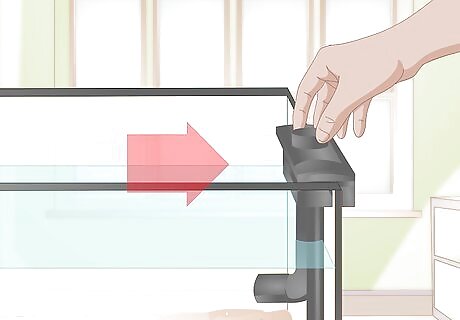
Set up filtration. Filtration is important in any tank, but especially for your fry. Set up a simple foam filter or other appropriate filtration for the size of your tank. A foam filtration system with an air pump is best so the fry don't get caught in the filter or stuck to the filter. You can also make your own filter modification by stretching a small strip of nylon over the filter and securing it with a rubber band. It is imperative to make sure your filter is fry-safe. If it is not, it has the potential to suck up the fry. For extra filtration, you can take gravel from the existing aquarium, put it in a nylon or mesh bag, and set it in the fry aquarium. This will be your biological filtration.
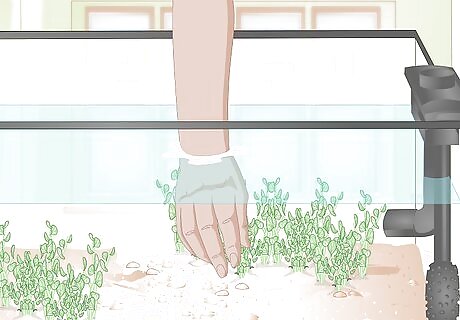
Add plants to your tank. You may use artificial plants or live plants, but it is important to plant your tank before the fry arrive. This provides cover for the fry in their early days, and acts similar to a breeding trap. Hornwort is a great plant for fish fry as it can easily live on top of the water and is very hardy. Look for a mixture of broad-leafed plants such as Java ferns as well as grasses. Float some of the plants so that the newborns have an area near the surface to hide immediately after being born.
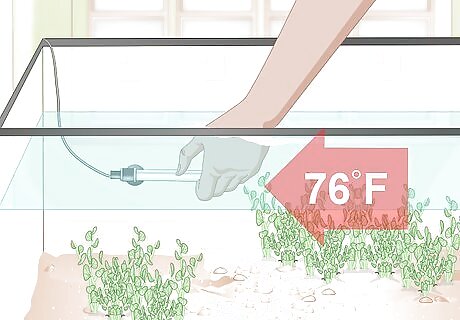
Heat the tank. Since mollies are tropical fish, they are going to need to be in water that approximates a tropical climate. Keep your water between 72 and 84 degrees Fahrenheit (23 to 28 C) using an aquarium heater. Estimate needing around 5 watts from your heater for every gallon of water in your aquarium. Talk with a specialist at your local aquarium store to get the right heater for your setup. Use an aquarium thermometer to monitor the temperature of your tank and ensure it is consistent.
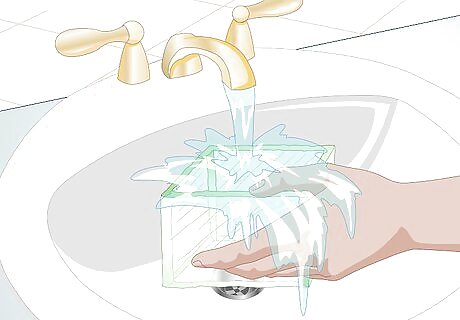
Find a breeding trap. If you truly cannot equip a breeding tank, a mesh breeding trap may be a reasonable alternative. You can buy one of these mesh boxes meant to protect small fish from your local aquarium store or pet shop. Hang it along the side of your regular aquarium. Rinse the mesh in warm, fresh water before hanging it in order to ensure it is as clean as possible for the fry. Keep in mind that fry will quickly outgrow the mesh and may still need a larger tank separate from other adult fish before they are ready to be introduced into your larger aquarium.
Introducing Your Fry
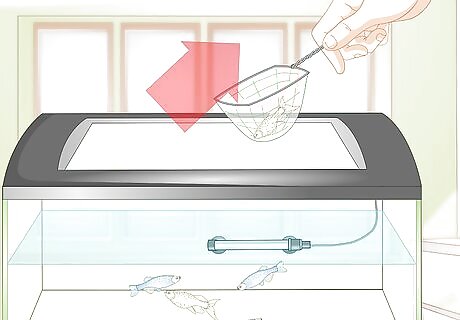
Move the mother. If your fry will come from a live bearer, move the mother before she gives birth. You will know when a female molly is preparing to give birth by watching the swell of her abdomen as well as by observing the spots near her anal fin, which will darken as the delivery date nears. Adults, especially males, may feed on newborn fry, so it is imperative to move the mother into the nursery tank before the fry are born. The mother can also her babies, which is why it's best to relocate her.
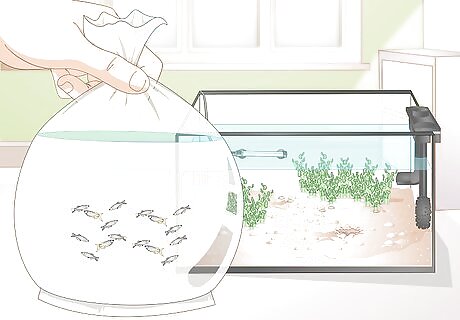
Bring your molly fry home. If you are getting your fry from a store, breeder, or another molly fish enthusiast, be prepared to pick them up quickly after birth. Make sure the fry are sealed in a plastic bag with warm water and room enough for the fry to move around. Try to get your fry home as fast as possible. You want to minimize the amount of stress on your fry, so avoid taking long routes home or stopping while you still have the fry in transit.
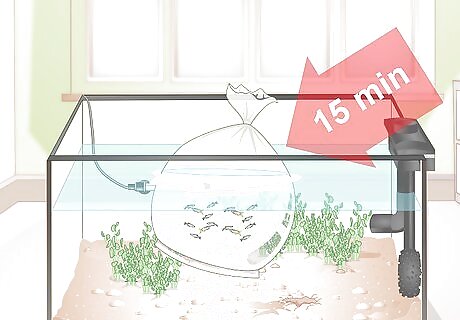
Acclimate the fry. If you are getting your fry from elsewhere, set aside around 15 minutes to acclimate your fry. Allow the bag holding the fry to float in your nursery tank for at least 15 minutes in order to slowly bring the water temperature in the bag up to the temperature in the tank. Introducing your fry into your tank without acclimating them may shock their system and lead to some of the fry dying off. The water for the fry aquarium should come from the existing aquarium where the mother is.
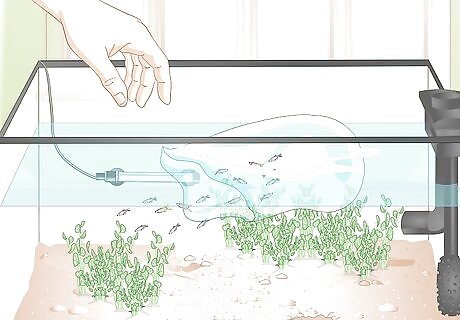
Let the fry out. Once the set period has passed, introduce the fry to the tank by gently opening the plastic bag and allowing the fry to swim out. Do not dump the bag into the water, and do not squeeze the fry to get them out. If you are using a breeding trap, you may want to hold the trap right at the surface of the water and gently allow the water to flow out of the plastic bag in order to prevent any fry from escaping into the larger aquarium.
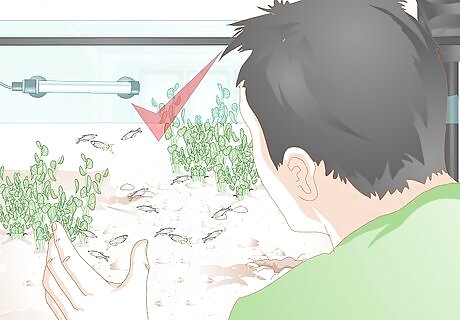
Watch the fry. Observe the fry after they are introduced into the nursery aquarium. Make sure they are all moving and hiding. If any of the fry did not survive birth or the journey home, use a net to quickly remove them from the aquarium. Observe the mother to make sure she is not acting aggressively toward the newly hatched fry, if they are in the same tank. If so, move the mother back into your regular aquarium.
Raising Your Fry
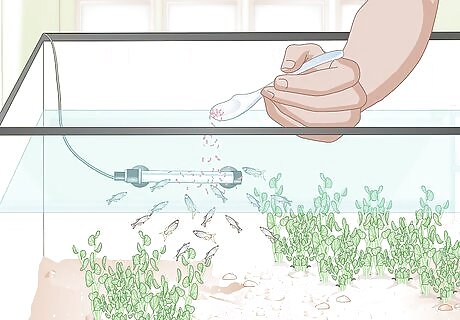
Feed the fry. Right after the fry are born or are introduced into the tank, feed them. Your local aquarium shop might have food made especially for fry. Otherwise, you can use baby brine shrimp or a high quality flake food that is ground into a powder. Liquid fry is a good food for fish fry. Regular flake food may be too large for the fry to handle. Use a coffee grinder or a mortar and pestle to grind up your regular fish food into a powder that is more manageable for the fry. Keep to a regular feeding schedule. Feed your fry small amounts of food, about a pinch at a time, several times a day. To make it easy, feed the fry immediately before or after you eat. Clean any uneaten food from the tank. Use a net or a skimmer to get powdered food off of the surface of the water.
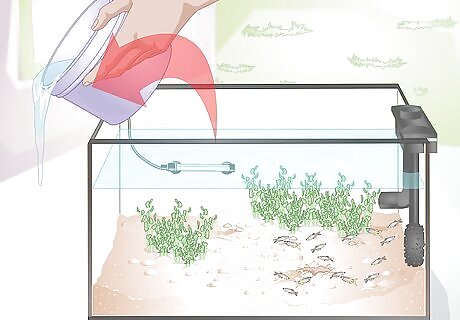
Change the water. Even with a filter, you want to change the water regularly to ensure the health of your fry. Try to use some water from your standard aquarium when you change out the fry’s water in order to acclimate them to their eventual home. Look to change about twenty percent of the tank’s water every day. That means that if you have a 10 gallon aquarium, you want to take two gallons a day out and replace them with two gallons of water from your regular aquarium.
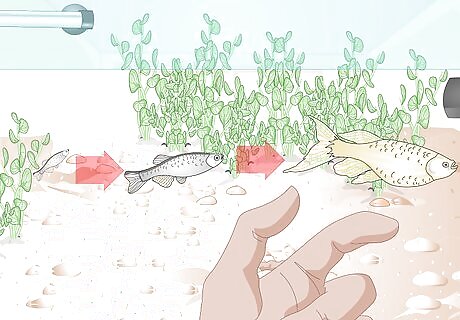
Watch their growth. It will take around one to two months for your fry to grow large enough to be introduced into your standard aquarium. The fry should be larger than the mouths of an adult molly fish. Do not move the molly fry until you are sure they are ready to handle your larger tank. Moving the fry prematurely may cause tension between the fry and your other fish.
Moving Your Fry
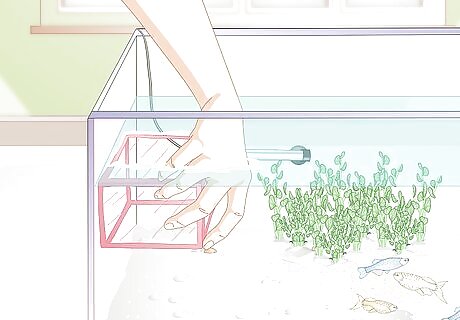
Find a breeding trap. Use a breeder trap to acclimate your fry a few at a time to your normal tank. Purchase a breeding trap if you do not have one already, and set it up on the side of the tank to which you want to move the fry. Clean or rinse the trap before setting it in your aquarium. This ensure the safety and health of your current fish, as well as the fry.
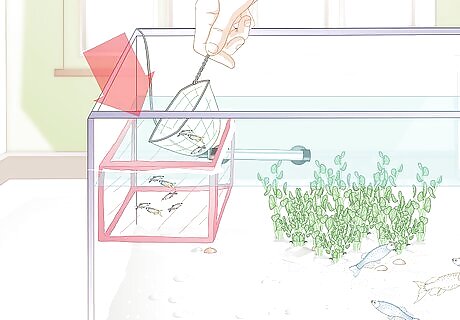
Transfer the fry. Transfer the fry a few at a time to the breeding trap, using a very fine net. For example, a brine shrimp net would work perfectly. Do not overcrowd the breeding trap. Make sure the fry have enough room to swim around comfortably while you transfer them. Do a few at a time so that you do not crowd the trap.
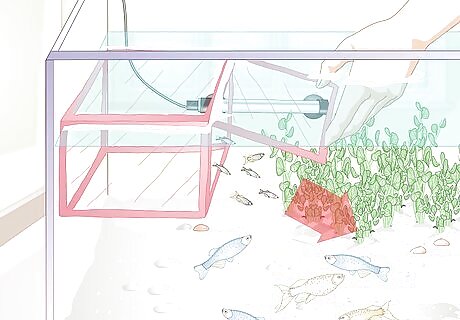
Acclimate the fry. Allow the fry to acclimate for around one hour in the breeding trap before releasing them into your aquarium. When you are ready to release them, submerge the trap well below the waterline of the aquarium, open it, and allow the fish to swim out. Observe the fry for a few minutes after letting them out of the trap. Make sure that the fry aren’t being antagonized or harmed by any of your other fish.
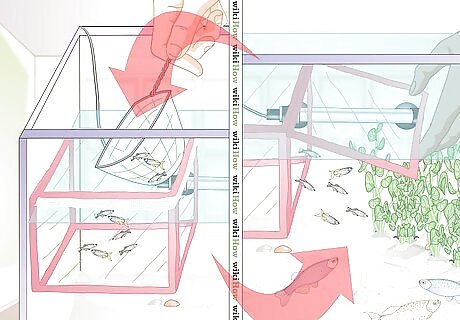
Repeat the process. Continue on with this process until all of your fry are in your aquarium. Allow each fry time to acclimate before letting them loose in your regular tank. Watch the fry carefully for the first couple days after they move tanks to ensure their health and safety. If an individual fry seems to be struggling in your aquarium, you may consider moving it back to the nursery tank or into the breeding trap for a few days before retrying to acclimate it.




















Comments
0 comment